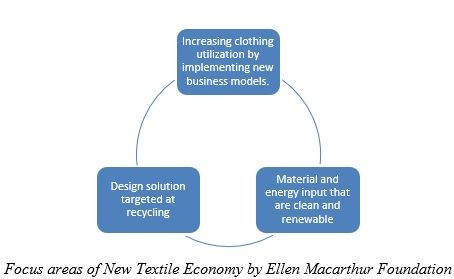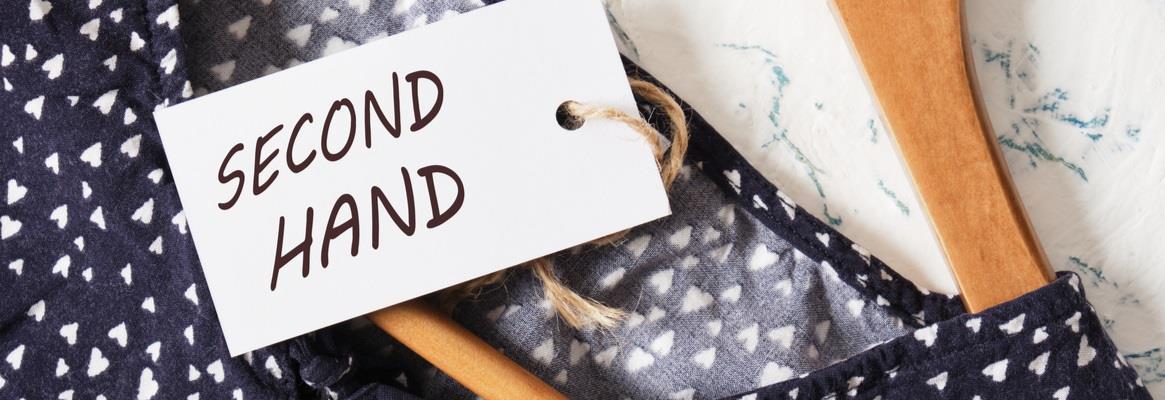Clothing like food and shelter is the basic and fundamental requirement of daily life. The textile and apparel sector also holds a major share in the global economy. However, the industry is growing in a linear model and is not sustainably fit for the world. The principles of circular economy need to be applied to this sector. There are three main areas that need attention to achieve the same. These are:
1. Increasing clothing utilisation by implementing new business models.
2. Material and energy input that are clean and renewable
3. Design solution targeted at recycling
The textile and clothing sector is a $1.3 trillion industry. It provides employment to 300 million people across the entire supply chain. According to a report by Ellen Macarthur Foundation, 60 per cent of the textile production consists of apparels. The report suggests that about twice the volume of clothing is produced currently as compared to 15 years ago. Along with this the utilisation of these garments has reduced by 40 per cent. This is due to the growth of fast fashion apparel productions that has shorter lifespan, more number of collections annually and is cheaper.
The report claims that the transition of the textile and apparel industry to a circular economy can bring along an opportunity that be of about $560 billion economic value. This will need new business models and collaboration of all stakeholders in the supply chain.
The current model of the textile and clothing industry has a number of challenges. This begins with the massive underutilisation of garments. The rates are higher in lower income countries. However, in higher income countries, the rates decline. In the US, for example, the rate is one fourth of the global average. An estimate indicates that a value of $460 billion dollars is lost as consumers discard clothes that are still wearable. A percentage of clothing is thrown away after only seven to eight wears.
The carbon footprint of this sector is also very high. The industry mostly depends on non-renewable resources. About 98 million tons of resources are required annually. This includes oils for synthetic fibre production, fertilisers and pesticides for cotton production and chemicals for dyeing and finishing of fabrics. This dependency, in addition to the low rates of utilisation and low levels of recycling, creates a massive pressure on the environment and its resources. The pollution thus caused due to this sector is also paving the way to 2oC temperature rise by 2050.
Thus, it is important that the textile and clothing industry shifts to a circular model of business. Ellen Macarthur Foundation in its report of A New Textiles Economy proposes a vision that is in correspondence with the principles of circular economy. These business models are restorative and regenerative, which in turn should be beneficial for business, society, and environment. This system targets to keep garments, textile, and fibres at their highest value at the usage phase. These clothes should again re-enter the economy after the potential life ends and never becomes a waste. This model is based on the three focus areas as discussed earlier and shown in the image below.

A circular system like this will have some specific attributes. Firstly, the garment produced through such a model should be high quality and durable. However, at the same time, these garments should also be affordable and individualistic. Consumers should have access to the clothing that they need. This business models should be aimed at providing consumers access of clothes that might not be affordable through traditional sales. The design and production of these apparels should be of high quality and should be aimed at providing multiple functionality and flexibility.
Secondly, the system should capture the full potential value of clothing during the usage as well as the after-usage phase. In this economy, apparels are used more. Once the usability of the clothing is no longer possible, these should be recycled. This will allow the system to capture the value to the raw materials used at a different level. To make this feature successful, it is important that new designs are made such that they align to the possibility of recycling.
Third, a system such as this, need to run on renewable resources in terms of energy and materials. The usage of renewable energy will reduce the dependence on fuel resources and make the system more sustainable. Along with the recycled inputs, the renewables will ensure that the system uses lesser energy and fewer resources are consumed.
Fourth, this model will project the true cost of the material and processes in the price of the products. The price of the product should reflect just not the production costs, but also the negative environmental and societal impacts.
Fifth, the new textiles economy is supposed to regenerate the natural environment and not create pollution. The renewable resources discussed earlier should be extracted from nature using regenerative and restorative methods. This will in turn increase the natural capital. Regenerative agricultural techniques like wood-based fibres will be encouraged and leakages of toxic chemicals and plastic microfibers are cut out by design.
Finally, the system should be distributive by design. The new textiles economy will provide opportunities for distributive and inclusive growth. This will create an ecosystem where small to large enterprises will thrive equally and thus enough value is created for all stakeholders to participate fully.
The circular economy for fashion needs to develop business models that can keep clothing in usage phase. This can be done by making sure that the garments are durable and not disposable. This will also help in change of consumer perception. A number of innovative business models are targeting to fill this gap. These business models include subscription and rental models as well as peer to peer sharing.
Rental models can be beneficial where the consumer will have access to a wide variety of choices. This will also reduce the demand of production of new apparels. Short of rental models have immense opportunity in the offer value proposition where the consumer needs and preferences keep on changing. Examples of this include maternity wears, infant wears as well as the ever-changing fast fashion apparels.
To make the rental models successful, it is important that the garments are durable and made with high-quality. Consumers often value higher quality products. However, the lack of information leads them to make poor choices. New technologies can provide customisation of clothing which may lead to better customer satisfaction and reduce the disposal rate. Durable clothing can also offer the opportunity of resale. Inclusion of proper care labels will also increase the lifespan of the garments. Brands can also offer repair of their garments so that these are not discarded, and the full potential value can be captured.
But all these converge to point, where the question lies that what is the role of an individual to make this system practical. As consumers, we need to pause, to think and to contemplate. A complete change of mindset and lifestyle patterns is essential for this transition. Adoption of new and innovative business models, designing from waste and designs that ensure recyclability will unlock endless opportunities and possibilities in the textile and fashion sector.











Comments